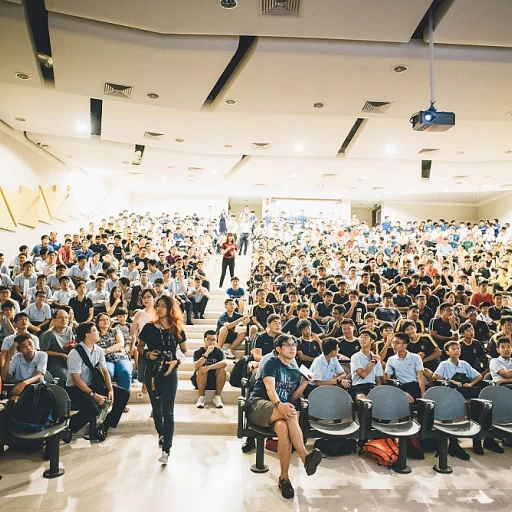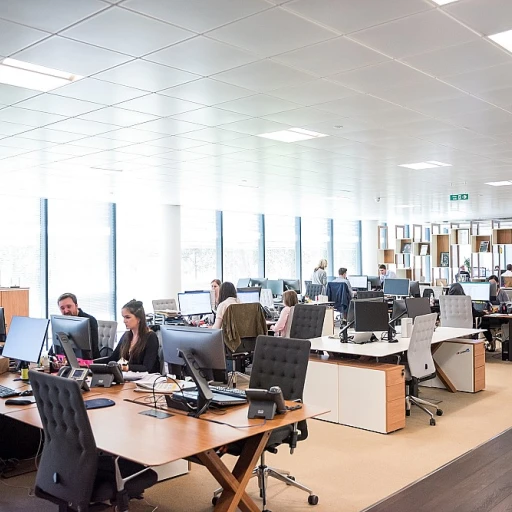
Defining Linear Asset Management
Introduction to the Concept of Asset Management for Continuous Assets
In the landscape of asset management, the focus often centers on individual pieces of equipment. However, managing linear assets is a distinct aspect that necessitates a particular approach due to the continuous nature of these assets. Linear Asset Management (LAM) refers to the administration and maintenance of infrastructure assets such as roads, railways, pipelines, and power lines that are spread out over large distances.
Unlike conventional asset management, which might concentrate on discrete assets, LAM requires a more comprehensive strategy to account for the elements intrinsic to linear assets. These assets are often part of a larger infrastructure system, making them vital to the community and economy. Proper management is crucial for achieving asset performance, optimized maintenance schedules, and improved operational efficiency.
Organizations dealing with linear assets must effectively track and manage their condition over time. Utilizing technologies such as SAP LAM, Maximo linear, and other asset management systems allows them to monitor and measure asset performance and maintenance, effectively handling work orders, and ensuring infrastructure sustainability.
The ability to handle real-time data and linear referencing is essential, as it aids in making informed management decisions that enhance performance. Therefore, linear asset management is not merely about maintenance but rather integrating systems to augment infrastructure functionality and reliability over its lifecycle.
Key Components of Linear Asset Management
Key Elements for Efficient Management
Linear asset management (LAM) involves a multifaceted approach that seamlessly integrates various components to ensure optimal performance and maintenance of linear assets. Understanding these key elements can significantly enhance an organization's ability to manage their infrastructure effectively.
Asset Inventory and Data Management
A comprehensive asset inventory is crucial in any LAM system. Organizations must meticulously track and record data pertinent to their assets. This includes details such as the type of asset, its location, and condition. Utilizing systems like SAP LAM or Maximo Linear can streamline this process by providing a robust framework for real-time data tracking and condition monitoring.
Work Orders and Maintenance Scheduling
An integral part of LAM is the management of work orders and maintenance schedules. Effective linear asset management hinges on the ability to organize and execute maintenance tasks efficiently. Systems should allow for the generation and tracking of work orders, ensuring maintenance is conducted timely to avoid any disruptions in service or safety concerns.
Linear Referencing and Spatial Analysis
Linear referencing is another vital component that underpins LAM. It allows for accurate spatial analysis, which helps organizations measure asset conditions precisely. By implementing linear referencing, companies can pinpoint issues and allocate maintenance resources effectively, improving the overall performance of their assets.
Performance Monitoring and Predictive Analytics
To effectively manage linear assets, ongoing performance monitoring is essential. Systems should be capable of collecting and analyzing data to predict potential problems before they occur. Incorporating predictive analytics can significantly enhance an organization's capacity to preemptively address maintenance needs, reducing downtime and extending the lifespan of linear assets.
For those looking to optimize these components, exploring strategies for effective linear asset management offers further insights into ensuring the efficiency and longevity of infrastructure.
Challenges in Managing Linear Assets
Overcoming Challenges in Asset Management
When it comes to managing linear assets, organizations often face an array of challenges. These can hinder their ability to effectively keep track of and maintain infrastructure, ultimately impacting asset performance and operational efficiency. Below, we explore these common hurdles and how they affect linear asset management in real time. One significant obstacle in the management of linear assets, such as power lines and roads, is the sheer vastness and geographic spread of these systems. The sprawling nature of linear infrastructure means that traditional asset management systems must be adapted to handle linear referencing and accommodate the continuous nature of these assets. Another challenge lies in the realm of data management. To effectively manage linear systems, organizations must have a robust system in place to continuously monitor and measure asset condition. However, the integration of different management systems, such as Maximo Linear or SAP LAM, can be complex. These systems must be capable of processing vast amounts of data to support accurate, data-driven decision-making. Moreover, maintaining these assets requires constant vigilance and timely work orders. Proactive maintenance can reduce the risk of asset failure, yet ensuring that all work orders are executed promptly is not always straightforward. Implementing systems for tracking maintenance activities and coordinating resources efficiently is key to addressing this issue. Finally, a point of concern is the effective utilization of technology in asset management. Technology can significantly enhance management processes, yet it requires careful implementation and ongoing adaptation to be truly effective. For example, employing condition monitoring systems helps an organization to perform real-time assessments of linear assets and plan maintenance accordingly. These challenges underscore the need for strategic planning, selection of the right management tools, and continuous process improvement to ensure successful management of linear assets. Understanding these dynamics plays a crucial role in enhancing an organization's asset management capabilities. For further insights on relevant strategies, you can explore more on understanding product job families and core competencies in change management.Strategies for Effective Linear Asset Management
Enhancing Efficiency and Longevity
Organizations seeking to improve their infrastructure might turn to strategies that ensure effective management of their linear assets. These strategies not only enhance the performance of systems but also help maintain assets over their lifecycle. By focusing on several crucial points, companies can track the health of their linear assets and extend their utility.- Routine Maintenance and Inspections: Regular maintenance and inspections are paramount to ensuring the optimal performance of assets like power lines and railways. Organizations can implement condition monitoring to measure asset performance in real time, helping preempt problems before major failures occur.
- Utilizing Advanced Asset Management Systems: Investing in comprehensive asset management systems, such as SAP LAM or Maximo Linear, allows organizations to efficiently track linear assets. These systems provide detailed data and insights, aiding in better decision-making processes.
- Leverage Linear Referencing: Linear referencing is a crucial component in maintaining linear assets. It allows companies to pinpoint the exact location of an issue, ensuring a swift and effective resolution. Moreover, when combined with real-time data, it enhances the speed and accuracy of maintenance operations.
- Integration with Work Orders: Establishing a robust process for work orders ensures that maintenance work is scheduled and executed promptly. This coordination can reduce downtime and keep assets operating at peak performance.
- Maximizing Technological Advantages: The role of technology in asset management cannot be overemphasized. Emerging tech solutions like IoT sensors and AI enable organizations to monitor and control assets from a centralized point, ensuring more integrated and holistic management approaches.
The Role of Technology in Linear Asset Management
The Technological Backbone in Managing Linear Assets
Incorporating technology into the management of linear assets has become essential for organizations aiming to improve efficiency and asset performance. The evolution of technology presents numerous opportunities for streamlining processes, minimizing downtime, and improving the overall management system. Here’s how technology plays a crucial role in linear asset management:- Real-Time Data Tracking: Systems such as SAP LAM and Maximo Linear enable organizations to track assets in real time. This capability allows for immediate responses to changes in asset condition and aids in effective maintenance planning, particularly for infrastructures like power lines and railways.
- Enhanced Asset Performance: Technologies facilitate condition monitoring and performance measurement of linear assets, which empowers organizations to execute predictive maintenance and improve asset longevity. By analyzing the data, organizations can strategically plan work orders, prevent asset failures, and optimize resource allocation.
- Integration of Management Systems: With systems such as SAP and Maximo, linear asset management can be integrated across various business processes. This integration helps in the seamless management of assets through smooth operation and maintenance processes, while ensuring data consistency across the board.
- Linear Referencing Systems: These systems allow organizations to track and map the location of linear assets with high precision, a crucial requirement for assets spread over large geographical areas like roads, pipelines, and power lines. By utilizing a linear referencing system, organizations can better visualize their assets’ spatial context, facilitating more informed decision-making.
- Improved Maintenance and Work Planning: With data-driven insights provided by advanced technologies, organizations are able to optimize work order schedules and maintenance activities. This improvement ensures that work is prioritized correctly, thereby reducing operational disruptions and improving system performance.
Case Studies: Successful Linear Asset Management
Proven Approaches to Asset Success
Organizations around the globe have recognized the need for efficient linear asset management, considering its critical role in maintaining infrastructure. Here, we explore several cases where innovative strategies have led to successful outcomes.
Power Line Optimization
In the energy sector, the maintenance of power lines is a vital task. An organization in this space implemented condition monitoring systems that allowed them to track the performance of their lines in real time. By utilizing SAP LAM's features, they could efficiently track data related to asset performance, prioritize work orders, and schedule maintenance activities effectively. This proactive approach not only reduced downtime but also enhanced the overall reliability of the power infrastructure.
Transport Infrastructure Management
Transportation networks serve as another prime example of effective linear asset management. A company managing a vast network of rail tracks incorporated linear referencing systems to maintain precise data on track conditions. This approach allowed them to perform targeted maintenance, improve the safety and reliability of the rail system, and optimize resource allocation. By leveraging Maximo Linear capabilities, they coordinated maintenance work more efficiently, ensuring minimal disruption to service.
Pipeline Performance Enhancement
In the oil and gas sector, managing extensive pipeline networks is crucial. A case study highlighted the use of a comprehensive SAP linear asset management system that integrated historical data with real-time condition monitoring. The data-driven approach allowed for predictive maintenance efforts that prevented potential leaks and environmental hazards, thereby increasing the safety and efficiency of the pipelines.
Road Network Sustainability
In the realm of public infrastructure, managing road networks presents specific challenges. One success story involved using advanced asset management systems to map asset condition and execute timely maintenance. By ensuring accurate data capture and analysis, the system helped improve asset longevity and cut down maintenance costs significantly, providing a sustainable management solution that supported the local economy.
In each of these examples, the common point is the strategic use of technology and data integration to manage assets. By measuring performance and addressing issues proactively, these organizations have set a high benchmark for effective linear asset management.













